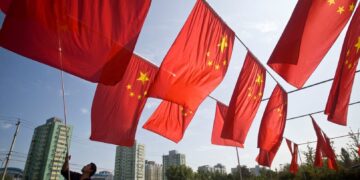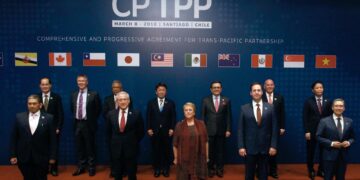By Karl Bourdeau and Sarah Kettenmann
Premier Li Keqiang delivered China’s 13th Five-Year Plan (FYP) on March 5 to the 12th National People’s Congress. The plan sets forth clear goals for overhauling or eliminating inefficient, outdated, or overcapacity industries and production facilities, increasing renewable energy production, and developing green infrastructure.
Carbon emissions
China plans to reduce carbon emissions by 18 percent by 2020. The FYP aligns with China’s December 2015 pledge at the Convention on Climate Change in Paris, where President Xi Jinping declared China’s commitment to reduce 2005 levels of total carbon emissions per unit of GDP by 60-65 percent by 2030. Although it does not reference the signed Paris Climate Agreement, the FYP outlines strategic steps to accomplish these interrelated goals.
Energy
The FYP states that by 2020 China aims to reduce energy consumption per unit of GDP by 15 percent. Compared to the 12th Five-Year Plan, which sought to reduce energy consumption per unit of GDP by 16 percent and brought about a reduction of 18.2 percent, this is a conservative goal.
To reach its target, the FYP lays out a number of mileposts. First, it confirms that energy consumption per unit of GDP fell by 5.6 percent in 2015, and sets a further goal to reduce energy consumption per unit of GDP by at least an additional 3.4 percent in 2016. Second, it caps China’s total energy consumption — a measurement that has not been articulated in prior five-year plans — at 5 billion metric tons of standard coal equivalent by 2020, a 16.3 percent increase in consumption from 2015 levels.
To meet China’s energy policy goals, energy production will shift from coal to renewables. China will upgrade some coal burning power plants to achieve ultra-low emissions and energy efficiency, but will also shut down coal-fired boilers that fail to meet national standards. The FYP reduces the use of untreated coal as well as the demand for coal by increasing electricity and natural gas substitutes. Over the next five years, China expects to increase natural gas supply and provide national government support for wind, solar, and biomass energy production.
Air quality
The FYP targets air pollution with goals to cut sulfur dioxide and nitrogen oxide emissions by 3 percent this year and maintain acceptable air quality levels in major cities for 80 percent of days by the end of 2020. To help achieve these objectives, the plan seeks to increase forest coverage to 23.04 percent and to restrict open burning.
A major component of China’s commitment to reducing air pollution and carbon emissions is redesigning its consumer vehicle market. The FYP seeks to expand the market for electric vehicles by constructing urban parking lots, installing charging facilities, and removing 3.8 million high-emission vehicles from roads. The FYP has also set a goal that car gasoline and diesel fuel will meet “National V” standards, which provide specific reductions in maximum limits for sulfur and manganese and reductions in minimum octane requirements.
Water
The FYP13’s goals for water consumption and water quality are to reduce water consumption by 23 percent from 2015 levels by 2020. China will also develop and upgrade urban sewage facilities. To improve water quality, the FYP targets reductions in chemical oxygen demand and nitrogen emissions. Wastewater treatment rates are set to increase to 95 percent in urban areas and 85 percent in non-urban counties. Finally, the FYP will curb water contamination by targeting reductions in and proper containment of waste ash from heavy industries and curbing growth in chemical fertilizers and insecticides used in agriculture.
Specific steps
To reconcile the seemingly incongruous goals of increased economic development and reduced consumption, the FYP necessitates — and Premier Li acknowledged — a framework for “innovative, coordinated, green, open, and shared development.” As such, the FYP provides for relaxed market access for private companies and shifts tax burdens to help stimulate a slowing economy. The FYP places state-owned enterprises (SOEs) on a more equal playing field with private companies by relaxing restrictions to market access for service sector companies and utilities, oil, gas, and electricity companies, while “upgrading” and improving performance of SOEs.
SOEs and private companies will enjoy “equalized” opportunities for streamlined project verification and approval, financing, fiscal and tax policies, and land availability. Perhaps most importantly, the FYP introduces tax reforms for all industries and specifically encourages development for green finance through tax incentives.
China will also invest heavily in domestic infrastructure and energy projects. The FYP aims to invest more than RMB 800 billion in railway construction, RMB 500 billion in urban rail transit, and RMB 1.65 trillion in road construction.
In addition, the FYP places greater focus on growing China’s service industry, which produces fewer emissions than traditional heavy industry. The plan also addresses and eliminates overcapacity in steel and coal industries and provides for the shutdown of outdated production facilities. Furthermore, the FYP sets goals to upgrade manufacturing operations and promote green manufacturing.
China’s National Development and Reform Commission and National Energy Administration recently announced China will halt construction plans for 200 new coal-fired power stations that were projected to produce 105 gigawatts of power. The country will continue to invest in major new hydropower and nuclear power projects. It also plans a further increase in China’s domestic network of ultra high-voltage power transmission, smart grids, and pipelines for oil and gas transmission.
Finally, the FYP aims to modernize and standardize production from commercial agriculture. Streamlining agriculture will reduce overcapacity, and support China’s 2016 effort to turn 1 million hectares of marginal cropland into forest or grassland. The plan also calls for a plateau in the use of chemical fertilizers and insecticides in an effort to improve water quality.
To realize these targets, China will promote development of greater network-based information technology. It is anticipated that advancing information technology will drive efficiency in production and industry supply chains and help enhance conventional economic drivers in manufacturing and service industries. The FYP encourages greater crowdsourcing, startups, and innovation to spur network-based technology developments.
About the author: Beveridge & Diamond advises Chinese companies on the environmental considerations of doing business in the United States and, through relationships with a network of Chinese national law firms, on environmental issues faced by multinational companies doing business in China. Firm Principal Karl Bourdeau regularly travels to China and fosters dialogue among various stakeholders regarding China’s evolving environmental regulatory regime. Sarah Kettenmann is an associate with the firm. For more information, please contact the authors or any member of our China Practice.






























